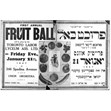- Address
- 10 St Andrew Street
- Source
- Landmarks
- Address
- 10 St Andrew Street
- Time Period
- 1930
- History
- It was founded by poor Jewish immigrants from Russia (mostly Minsk) in 1912. The current Byzantine Revival building was completed in 1930. The congregation has had only three full-time rabbis: Meyer Levy (1916–1921), Meyer Zimmerman (1940–1954), and Shmuel Spero, who has served from 1988 to the present. It is the only Orthodox synagogue in downtown Toronto with a full-time rabbi, and the only one that holds daily services.
- Category
- Religious
- Source
- Landmarks
- Address
- 23 Henry Street
- Source
- Landmarks
The Beth Jacob Synagogue (also known as the Henry Street Shul) was founded by Toronto’s Polish-Jewish Community, as the successor of an older, smaller synagogue on Elm Street. It was the first synagogue in Toronto designed by a Jewish architect--Benjamin Brown.
- Address
- 23 Henry Street
- Time Period
- 1922-1969
- Scope Note
- The Beth Jacob Synagogue (also known as the Henry Street Shul) was founded by Toronto’s Polish-Jewish Community, as the successor of an older, smaller synagogue on Elm Street. It was the first synagogue in Toronto designed by a Jewish architect--Benjamin Brown.
- History
- The grand new synagogue was dedicated in 1922, at a cost of $156,000, and could accommodate up to 800 worshippers. It was built in the Romanesque style. It was notable for its vaulted ceiling capped by a large dome and four smaller ones; stained glass windows and retractable roof used on Sukkot; a marble-lined mikvah in the basement; and an apartment for the caretaker (shammas) in the rear. The original ark (Aron Kodesh) is in Beth Jacob's current synagogue on Overbrook Ave in the Bathurst Manor. The original building was eventually sold and converted into a church. It is the current site of the Holy Trinity Russian Orthodox Church.
- Category
- Architecture
- Religious
- Source
- Landmarks
- Address
- 187 Brunswick Avenue
- Source
- Landmarks
During the early 1980s, newcomers to the synagogue introduced an alternative egalitarian service in the basement, which eventually became the main service in the sanctuary. The Synagogue underwent renovations in the early 1980s, and again more recently, in an effort to accommodate its new members and to provide for its future as a neighborhood synagogue. In recent years, the First Narayever has become one of the most well-attended and active synagogues in the downtown area.
- Address
- 187 Brunswick Avenue
- Time Period
- 1914-present
- Scope Note
- During the early 1980s, newcomers to the synagogue introduced an alternative egalitarian service in the basement, which eventually became the main service in the sanctuary. The Synagogue underwent renovations in the early 1980s, and again more recently, in an effort to accommodate its new members and to provide for its future as a neighborhood synagogue. In recent years, the First Narayever has become one of the most well-attended and active synagogues in the downtown area.
- Category
- Architecture
- Religious
- Source
- Landmarks
- Address
- 25 Bellevue Avenue
- Source
- Landmarks
The congregation of Rodfei Sholom Anshei Kiev, commonly known as the Kiever, dates back to 1912. The first few members had little means for funding a new synagogue in 1912, so services at this time were held in a rented house on Centre Avenue in the Ward.
- Address
- 25 Bellevue Avenue
- Time Period
- 1927-present
- Scope Note
- The congregation of Rodfei Sholom Anshei Kiev, commonly known as the Kiever, dates back to 1912. The first few members had little means for funding a new synagogue in 1912, so services at this time were held in a rented house on Centre Avenue in the Ward.
- History
- In 1917, the Kiever acquired a house at 25 Bellevue Avenue in Kensington Market and by 1923 the Kiever congregation raised enough funds to build a synagogue large enough to accommodate its growing numbers. The Kiever Executive contracted Benjamin Swartz, a Jewish architect, to design the current synagogue at 25 Bellevue, which replaced the two houses that had been used for services. The Synagogue was completed in 1927, after three years of construction. Today, the Kiever is a vibrant synagogue and one of a handful of synagogues remaining in the downtown area.
- Category
- Architecture
- Religious
- Source
- Landmarks
- Address
- 91 Denison Avenue
- Source
- Landmarks
The Anshei Libavitch Synagogue was formed around 1905 and was first located on Centre Ave in the St. John's Ward. It later moved to Denison Ave where it remained until its merger with Shaarei Tefillah on Bathurst Street in 1976.
- Address
- 91 Denison Avenue
- Time Period
- 1905-1976
- Scope Note
- The Anshei Libavitch Synagogue was formed around 1905 and was first located on Centre Ave in the St. John's Ward. It later moved to Denison Ave where it remained until its merger with Shaarei Tefillah on Bathurst Street in 1976.
- Category
- Architecture
- Religious
- Source
- Landmarks
- Address
- 134 D'Arcy Street
- Source
- Landmarks
The Shedlover Shul was a small synagogue established by immigrants from Szydlow, Poland in 1914. The Yiddish and Russian pronunciation is Shidlov.
- Address
- 20 Brunswick Avenue
- Source
- Landmarks
- Address
- 327 Spadina Avenue
- Source
- Landmarks
The congregation was formed in 1909 and its first building opened on Spadina Ave in 1921. Around 1960, the congregation moved to the Bathurst and Sheppard area after the synagogue wsa damaged by a fire. In 1975, they merged with Beth Emeth Beit Yehuda
- Address
- 327 Spadina Avenue
- Time Period
- 1909-1975
- Scope Note
- The congregation was formed in 1909 and its first building opened on Spadina Ave in 1921. Around 1960, the congregation moved to the Bathurst and Sheppard area after the synagogue wsa damaged by a fire. In 1975, they merged with Beth Emeth Beit Yehuda
- Category
- Architecture
- Religious
- Source
- Landmarks
- Address
- 69 McCaul Street
- Source
- Landmarks
Beth Hamidrash Hagadol, more commonly known as the McCaul Street Synagogue, was first established in 1887 and was originally located above a grocery store (owned by A. Broudy) at the corner of Richmond and York Streets. Due to financial instability, the location changed frequently during its early years, eventually to the top of a blacksmith shop. In 1899, a new home was purchased at the corner of Simcoe and Pearl Streets.
- Address
- 69 McCaul Street
- Time Period
- 1905-1952
- Scope Note
- Beth Hamidrash Hagadol, more commonly known as the McCaul Street Synagogue, was first established in 1887 and was originally located above a grocery store (owned by A. Broudy) at the corner of Richmond and York Streets. Due to financial instability, the location changed frequently during its early years, eventually to the top of a blacksmith shop. In 1899, a new home was purchased at the corner of Simcoe and Pearl Streets.
- Jews from Russia, Galicia, Bucovina, Poland, Roumania, Latvia, Lithuania, White Russia and other countries, particpated in the establishment of the synagogue. The intenion with this synagogue was for it to be inclusive, regardless of country of origin.
- History
- In 1905, the enlarged congregation moved into a larger home, the former McCaul Street Methodist Church, which it quickly renovated and remodeled into a synagogue. The synagogue was renamed Beth Hamidrash Hagadol Chevra T'hilim. The shul thrived for the next 50 years on McCaul Street. In September of 1952, the synagogue and its sister synagogue Goel Tzedec amalgamated to form Beth Tzedec.
- The first cantor was Yudel Breslin and in 1904, Mr. M. Shulman became the cantor. Rabbi Jacob Gordon was appointed in 1905.
- Category
- Architecture
- Religious
- Source
- Landmarks
- Address
- 58 Cecil Street
- Source
- Landmarks
This building was originally a church, built in 1981. The Ostrovtzer Society (a group of new immigrants from Ostrowiec, Poland bought the church in 1924. They changed the steeple to a dome. The synaogogue was known to have the best acoustics for cantors and many visiting cantors sang there.
- Address
- 58 Cecil Street
- Time Period
- 1924-1966
- Scope Note
- This building was originally a church, built in 1981. The Ostrovtzer Society (a group of new immigrants from Ostrowiec, Poland bought the church in 1924. They changed the steeple to a dome. The synaogogue was known to have the best acoustics for cantors and many visiting cantors sang there.
- History
- The building was sold 1966 and is currently used as a community centre for the Chinese community. The founders plaques and a chandelier with stars of David are still in place. The upper floor Ladies gallery was converted to office space and a library.
- Source
- Landmarks
- Address
- 397 Markham Street
- Source
- Landmarks
The Shaarei Tzedek Congregation was founded by new Russian immigrants around 1901. The congregation’s first shul was situated originally on 29 Centre Avenue, south of Dundas on the east side of the street, in the vicinity of present-day Nathan Philips Square. Louis Gurofsky (1871-1934), a prominent member of the Jewish community and a business man, lived in a house at 397 Markham Street with his family. In 1937, following Gurofsky’s death in 1934, Shaarei Tzedek occupied the Markham Street house of the Gurofsky family and renovations were soon undertaken to convert the residence into a synagogue, designed by Benjamin Swartz.
- Address
- 397 Markham Street
- Time Period
- 1937-present
- Scope Note
- The Shaarei Tzedek Congregation was founded by new Russian immigrants around 1901. The congregation’s first shul was situated originally on 29 Centre Avenue, south of Dundas on the east side of the street, in the vicinity of present-day Nathan Philips Square. Louis Gurofsky (1871-1934), a prominent member of the Jewish community and a business man, lived in a house at 397 Markham Street with his family. In 1937, following Gurofsky’s death in 1934, Shaarei Tzedek occupied the Markham Street house of the Gurofsky family and renovations were soon undertaken to convert the residence into a synagogue, designed by Benjamin Swartz.
- History
- Following the Second World War, a second wave of Russian immigrants, many of whom were Holocaust survivors, found spiritual refuge at the Markham Street shul, and membership again began to rise. In the 1950s the shul employed the services of Rabbi Israel Frankel, a prominent Jewish scholar and one of the founders of the Toronto Jewish Public Library. As the Jewish community increasingly moved to the northern and outlying suburbs of Toronto, this general trend began to take its toll on the membership of the Shaarei Tzedek into the 1960s. The congregation was obliged to declare bankruptcy in 1968. However, a concerted fund-raising effort by Jewish community leaders in the area re-established the congregation in 1970, under the spiritual and administrative leadership of the shul’s president, Dr. Joseph Greenberg.
- Category
- Architecture
- Religious
- Source
- Landmarks
- Address
- 371 Spadina Avenue
- Source
- Landmarks
Hyman's Books and Art was a popular locale for the literary crowd. Hebraists were known to spend time here, discussing the latest trends in the world of literature. The owner Ben Zimon Hyman was also a Hebrew teacher but had originally trained as an engineer both in Russia and at the University of Toronto.
- Address
- 371 Spadina Avenue
- Time Period
- 1925-1973
- Scope Note
- Hyman's Books and Art was a popular locale for the literary crowd. Hebraists were known to spend time here, discussing the latest trends in the world of literature. The owner Ben Zimon Hyman was also a Hebrew teacher but had originally trained as an engineer both in Russia and at the University of Toronto.
- History
- The store was operated by Ben Zion Hyman and his wife Fanny. Their hours were 8:30 a.m. to 1pm daily (except for Saturday). There was a mimeograph machine, pop cooler, newspapers and a bar mitzvah registry. They carried Yiddish and Hebrew books, Judaica, tickets for the Standard Theatre, stationary, and school supplies. The store later moved to 412 Spadina Ave. (Donegan, Spadina Ave., p.138)
- Category
- Education
- Arts
- Retail store
- Source
- Landmarks
- Address
- 525 Dundas Street West
- Source
- Landmarks
Henry (Harry) Dworkin, husband of Dorothy (Goldstick) Dworkin, was born in 1886 in Russia and came to Canada in 1905. In the early years, Henry dispersed food to the hungry and helped people from Poland, Rumania, and Latvia after they settled in Canada. Henry opened E. & H. Dworkin Steamship and Bankers in 1917 with his brother Edward. The business continued as Dworkin Travel at 525 Dundas Street West. Dworkin Travel was the oldest travel agency in Toronto which also carried a wholesale tobacco business at the rear.
- Address
- 525 Dundas Street West
- Time Period
- 1917-1940s
- Scope Note
- Henry (Harry) Dworkin, husband of Dorothy (Goldstick) Dworkin, was born in 1886 in Russia and came to Canada in 1905. In the early years, Henry dispersed food to the hungry and helped people from Poland, Rumania, and Latvia after they settled in Canada. Henry opened E. & H. Dworkin Steamship and Bankers in 1917 with his brother Edward. The business continued as Dworkin Travel at 525 Dundas Street West. Dworkin Travel was the oldest travel agency in Toronto which also carried a wholesale tobacco business at the rear.
- History
- Henry was also the founder of the Labour Lyceum. Henry and Dorothy had one daughter, Ellen, whose nickname was Honey. He died in an auto accident in 1928 and 20,000 people attended the funeral.
- Category
- Retail store
- Source
- Landmarks
- Address
- 339 Spadina Avenue
- Source
- Landmarks
The variety store was run by Mr. Coopersmith and his wife. Mrs. Coopersmith was involved in organizing the Mother's Day celebrations for the Labour League.
- Address
- 339 Spadina Avenue
- Scope Note
- The variety store was run by Mr. Coopersmith and his wife. Mrs. Coopersmith was involved in organizing the Mother's Day celebrations for the Labour League.
- Source
- Landmarks
- Address
- 305 Spadina Avenue
- Source
- Landmarks
The Standard Barber Shop was owned by Benjamin and Gittel (nee Stillman) Barsh. Benjamin Barsh was also the music director for the Standard Theatre and played viola with the Toronto Symphony Orchestra.
- Address
- 374 Spadina Avenue
- Source
- Landmarks
Gordon Melamed (6 Apr. 1927-16 Nov. 2004) was born to Morris and Zena Melamed. The Melamed family was originally from Russia. Morris Melamed served in the Russian army during the Russo-Japanese War. He was married to Zena Melamed and they had eleven children, Gordon being the only boy. Morris Melamed owned a dry goods store and the family were active members of the Toronto Jewish community.
- Address
- 374 Spadina Avenue
- Scope Note
- Gordon Melamed (6 Apr. 1927-16 Nov. 2004) was born to Morris and Zena Melamed. The Melamed family was originally from Russia. Morris Melamed served in the Russian army during the Russo-Japanese War. He was married to Zena Melamed and they had eleven children, Gordon being the only boy. Morris Melamed owned a dry goods store and the family were active members of the Toronto Jewish community.
- Category
- Retail store
- Source
- Landmarks
- Address
- 332 Spadina Avenue
- Source
- Landmarks
Walerstein's ice cream parlour was owned by Abraham Walerstein, who was originally from Hamilton, Ontario. He opened it in 1917 and it became a hang out for Social Democrats.
- Address
- 400 Spadina Avenue
- Source
- Landmarks
- Address
- 376 College Street
- Source
- Landmarks
Leon Koffler was born in Romania. He moved to Canada and settled in the Toronto area at the age of fifteen with his mother and his three sisters. He graduated from the Ontario College of Pharmacy in 1921, and two years later, opened his first pharmacy at 376 College Street. Leon lived in the apartment above his store with his wife Tiana [née. Reinhorn] and their son Murray.
- Address
- 376 College Street
- Time Period
- 1923
- Scope Note
- Leon Koffler was born in Romania. He moved to Canada and settled in the Toronto area at the age of fifteen with his mother and his three sisters. He graduated from the Ontario College of Pharmacy in 1921, and two years later, opened his first pharmacy at 376 College Street. Leon lived in the apartment above his store with his wife Tiana [née. Reinhorn] and their son Murray.
- Category
- Retail store
- Source
- Landmarks
- Address
- 9 Brunswick Avenue
- Source
- Landmarks
The Toronto Hebrew Religious School was established in 1907 to provide children with a Jewish education based on non-denominational, Zionist, and traditional Torah values. The school’s curriculum focused on the importance of the Jewish community and people (klal yisrael), as well as the responsibilities and privileges that being a Canadian citizen entailed. Being a staunchly Zionistic institution, all lessons were taught in Hebrew (ivrit bi ivrit). Originally situated on Simcoe Street, the school moved to its Brunswick Avenue location in 1925, and was known from then on as the Toronto Hebrew Free School and more informally as the Brunswick Avenue Talmud Torah. The building was designed by Jewish architect, Benjamin Brown.
- Address
- 9 Brunswick Avenue
- Time Period
- 1925-1946
- Scope Note
- The Toronto Hebrew Religious School was established in 1907 to provide children with a Jewish education based on non-denominational, Zionist, and traditional Torah values. The school’s curriculum focused on the importance of the Jewish community and people (klal yisrael), as well as the responsibilities and privileges that being a Canadian citizen entailed. Being a staunchly Zionistic institution, all lessons were taught in Hebrew (ivrit bi ivrit). Originally situated on Simcoe Street, the school moved to its Brunswick Avenue location in 1925, and was known from then on as the Toronto Hebrew Free School and more informally as the Brunswick Avenue Talmud Torah. The building was designed by Jewish architect, Benjamin Brown.
- History
- In 1946 the school became known officially as the Associated Hebrew Schools of Toronto. Having started initially as an afternoon and weekend school, in the 1940s the school began offering a full day program with its’ first grade 8 day school class graduating in 1951. From the Brunswick location, Associated branched out, and opened up branches further north, eventually establishing campuses on Finch Ave. and Neptune, where the schools are currently located.
- Category
- Education
- Source
- Landmarks
- Address
- 494 Spadina Avenue
- Source
- Landmarks
In 1952, Edell married Dolly Weinstock, the daughter of Moishe and Sylvia Weinstock. They lived in the newly developed suburb of North York with their four children: Ethel, Simcha, Malka and Joseph. After 10 years of marriage, Dolly died and in 1966, he married Celia Rogen Hoffman.
- Address
- 494 Spadina Avenue
- Time Period
- 1948
- Scope Note
- In 1952, Edell married Dolly Weinstock, the daughter of Moishe and Sylvia Weinstock. They lived in the newly developed suburb of North York with their four children: Ethel, Simcha, Malka and Joseph. After 10 years of marriage, Dolly died and in 1966, he married Celia Rogen Hoffman.
- History
- Sol Edell was a founding member and first president of the Clanton Park Congregation. He was actively involved in the construction of the synagogue and its development. He continued to be affiliated with Shomrai Shabbos where his grandfather Rabbi Yosef Weinreb had been the rabbi. He was also involved with Adas Israel, the synagogue in Hamilton where his wife Celia had been an active member. He was chair of the Canadian Jewish Congress, Ontario Region -- Toronto Jewish Congress Archives Committee, which subsequently became the Ontario Jewish Archives.
- Category
- Retail store
- Source
- Landmarks
- Address
- 320 Bathurst Street
- Source
- Landmarks
- Address
- 320 Bathurst Street
- Time Period
- 1920-
- Source
- Landmarks
- Address
- 355 College Street
- Source
- Landmarks
- Address
- 355 College Street
- Time Period
- 1930-
- Source
- Landmarks
- Address
- 542 Dundas Street West
- Source
- Landmarks
The Yiddisher Zhurnal (or the Daily Hebrew Journal) was the primary organ for the Yiddish-speaking population in Toronto. This newspaper covered events in the Jewish world in Toronto and abroad. The paper was also a forum for Yiddish essayists. The long-time editor of the newspaper was Abraham Rhinewine (1887-1932). Born in Poland in 1887, he immigrated to London, England in 1902 and then came to Toronto with his wife Amy in 1907.
- Address
- 542 Dundas Street West
- Time Period
- 1910-1975
- Scope Note
- The Yiddisher Zhurnal (or the Daily Hebrew Journal) was the primary organ for the Yiddish-speaking population in Toronto. This newspaper covered events in the Jewish world in Toronto and abroad. The paper was also a forum for Yiddish essayists. The long-time editor of the newspaper was Abraham Rhinewine (1887-1932). Born in Poland in 1887, he immigrated to London, England in 1902 and then came to Toronto with his wife Amy in 1907.
- History
- The newspaper eventually moved to 409 College Street West (at Lippincott). The OJA has the Yiddisher Zhurnal on microfiche from 1915-1959.
- Category
- Political
- Education
- Arts
- Source
- Landmarks
- Address
- 665 College Street
- Source
- Landmarks
Henry Weingluck (1902-1987) was an artist and Toronto art gallery owner, who immigrated to Canada in 1948 after being imprisoned in concentration camps in France during the Second World War. He studied at art academies in Crakow, Copenhagen, and Berlin and was a pupil of Professor Max Lieberman, president of Berlin's Academy of Arts prior to the Nazi takeover of Germany. Weingluck often depicted Jewish themes in his paintings, in a style he called "academic impressionism." He exhibited in Paris with Kandinsky and Chagall, as well as at the Art Gallery of Ontario and the Jewish Museum, Berlin. He painted portraits of such prominent figures as Albert Einstein, Max Schmelin, Yehudi Menuhin, and Chaim Weizmann.
- Address
- 665 College Street
- Scope Note
- Henry Weingluck (1902-1987) was an artist and Toronto art gallery owner, who immigrated to Canada in 1948 after being imprisoned in concentration camps in France during the Second World War. He studied at art academies in Crakow, Copenhagen, and Berlin and was a pupil of Professor Max Lieberman, president of Berlin's Academy of Arts prior to the Nazi takeover of Germany. Weingluck often depicted Jewish themes in his paintings, in a style he called "academic impressionism." He exhibited in Paris with Kandinsky and Chagall, as well as at the Art Gallery of Ontario and the Jewish Museum, Berlin. He painted portraits of such prominent figures as Albert Einstein, Max Schmelin, Yehudi Menuhin, and Chaim Weizmann.
- History
- From 1933 to 1942, Weingluck lived in France and, during the Nazi occupation of France, was imprisoned in eight concentration camps from 1942 to 1945. The Nazis made use of his artistic talent as a barracks designer and portraitist. During this time, the Germans confiscated 375 of his paintings. After the war, Weingluck moved to Tangiers, Morocco, and then immigrated to Canada to join his brother in Toronto. Henry opened H. W. Art Gallery, at 665 College Street, around 1948, and then Weingluck's Art Gallery and Gift Shoppe at 623 College Street, in the 1950s. In 1950, he married his wife Rae (née Simon), whom he met in Canada. Henry died in Toronto in 1987.
- Category
- Arts
- Retail store
- Source
- Landmarks
- Address
- 399 Spadina Avenue
- Source
- Landmarks
N. Hoffman Grocery was owned and operated by Nathan (Nahum) Hoffman and his wife Rivka. They first owned a grocery store at 339 Centre Avenue in St. John's Ward. In 1915, they moved their store to Spadina Ave.
- Address
- 399 Spadina Avenue
- Time Period
- 1915-
- Scope Note
- N. Hoffman Grocery was owned and operated by Nathan (Nahum) Hoffman and his wife Rivka. They first owned a grocery store at 339 Centre Avenue in St. John's Ward. In 1915, they moved their store to Spadina Ave.
- Category
- Food-related business
- Source
- Landmarks
- Address
- 175 Baldwin Street
- Source
- Landmarks
The Perlmutar Bakery was opened in 1911 by Arrin Perlmutar who had immigrated to Canada from the Ukraine by way of London, England. He opened the bakery on the main floor of his home while his family of seven lived upstairs. The bakery had a wood-burning brick oven until the 1960s, when the city forced them to convert to electric.
- Address
- 175 Baldwin Street
- Time Period
- 1911-1974
- Scope Note
- The Perlmutar Bakery was opened in 1911 by Arrin Perlmutar who had immigrated to Canada from the Ukraine by way of London, England. He opened the bakery on the main floor of his home while his family of seven lived upstairs. The bakery had a wood-burning brick oven until the 1960s, when the city forced them to convert to electric.
- History
- The bakery was best known for their onion buns and rye bread. Electric mixers were used for cakes and bread but almost every other step was done by hand. Bread baking was started by 10:00 pm so that there would be fresh bread to deliver in the morning. The bakery closed in 1974.
- Category
- Food-related business
- Source
- Landmarks
- Address
- 29 Baldwin Street
- Source
- Landmarks
Mandel’s opened between 1913-1920. It was initially owned by Harry Mandel. After 1944, it was owned by one of his sons William Mandel. And, in the 1950s, it was owned by the brothers Saul, Abraham, Ben, and William Mandel, from approx. From 1960 to approximately 1965, it was owned by William Mandel (exclusively).
- Address
- 29 Baldwin Street
- Time Period
- 1915-1970
- Scope Note
- Mandel’s opened between 1913-1920. It was initially owned by Harry Mandel. After 1944, it was owned by one of his sons William Mandel. And, in the 1950s, it was owned by the brothers Saul, Abraham, Ben, and William Mandel, from approx. From 1960 to approximately 1965, it was owned by William Mandel (exclusively).
- History
- Mandel's Creamery manufactured cream cheese, cottage cheese, sour cream, and butter milk under the labels Mandel Bros. & Silver Brand. They also manufactured for private label brands and other wholesale and retail customers. They also sold wholesale butter, eggs, and hard cheese which they did not manufacture. Low salt & low fat cottage was a specialty sold to institutions such as Baycrest Hospital. Their customers included supermarkets, bakeries, restaurants, institutions, resorts, and summer camps. There were also retail sales out of the store front at 29 Baldwin St. The business was sold around 1965 to Mr. Bricks and Mr. Caplan who then sold it to Western Creamery some years later.
- Category
- Food-related business
- Source
- Landmarks
- Address
- 170 Brunswick Avenue
- Source
- Landmarks
Kalmen Greenspan & Sons was a butcher shop located on Brunswick Avenue.
- Address
- 319 Augusta Avenue
- Source
- Landmarks
Sam Gryfe started out peddling baked goods in Hamilton, Ontario around 1915. A store eventually opened at 319 Augusta Avenue in Kensington Market and operated during the 1930s. The bakery is now located on Bathurst Street. The bakery was also known as Crown Bakery. There was also a location in cottage country at Jackson's Point on Lake Simcoe.
- Address
- 319 Augusta Avenue
- Time Period
- 1930
- Scope Note
- Sam Gryfe started out peddling baked goods in Hamilton, Ontario around 1915. A store eventually opened at 319 Augusta Avenue in Kensington Market and operated during the 1930s. The bakery is now located on Bathurst Street. The bakery was also known as Crown Bakery. There was also a location in cottage country at Jackson's Point on Lake Simcoe.
- Category
- Food-related business
- Source
- Landmarks
- Address
- 182 Brunswick Avenue
- Source
- Landmarks
- Address
- 182 Brunswick Avenue
- Category
- Food-related business
- Source
- Landmarks
- Address
- 295 Spadina Avenue
- Source
- Landmarks
Harry and Jennie Shopsowitz started Shopsy's Delicatessen, a family business in 1921. Harry died in October 1945 and the business was passed along to his sons, Sam Shopsowitz and Izzy Shopsowitz. The business grew and became known as Shopsy’s. Eventually, Sam opened a meat processing plant, in addition to the restaurants, and by 1947, he became known as the "the corned beef king" in advertisements. Shopsy's corned beef and hotdogs were sold in grocery stores.
- Address
- 295 Spadina Avenue
- Time Period
- 1921-1983
- Scope Note
- Harry and Jennie Shopsowitz started Shopsy's Delicatessen, a family business in 1921. Harry died in October 1945 and the business was passed along to his sons, Sam Shopsowitz and Izzy Shopsowitz. The business grew and became known as Shopsy’s. Eventually, Sam opened a meat processing plant, in addition to the restaurants, and by 1947, he became known as the "the corned beef king" in advertisements. Shopsy's corned beef and hotdogs were sold in grocery stores.
- History
- Shopsy's became an institution in the city where the likes of Bob Hope, Al Waxman, Dennis Hull, and Scott Bowman were regular customers. Sam suffered a stroke in 1982 and died in September 1984 at age 63. After 62 years on Spadina, the restaurant moved to Yonge Street at Front Street in March 1983.
- Category
- Food-related business
- Source
- Landmarks
- Address
- 71 Kensington Avenue
- Source
- Landmarks
This store was owned and operated by Harry Trachter and his wife Becky (Cooper) Trachter.
- Address
- 71 Kensington Avenue
- Scope Note
- This store was owned and operated by Harry Trachter and his wife Becky (Cooper) Trachter.
- Category
- Food-related business
- Source
- Landmarks
- Address
- 649 College Street
- Source
- Landmarks
Moishe (Morris) Shternshis (ca. 1893-1976) was married to Fanny Rumianek (ca. 1896-1991). Moishe Stern owned and operated a dairy and delivered milk and other dairy products.
- Address
- 420 College Street
- Source
- Landmarks
Joseph Gary and Goldie (nee Lawrence) Gary married in 1921 in Rochester, N.Y. Shortly thereafter they moved to Toronto. Joseph and Goldie had three children; daughters Ethel (Halter) and Shirley (Cohen), and son Leslie. They owned and operated a grocery store on College Street. In 1950, after three years of visiting the region, Joseph and Goldie purchased a home on Amelia Street in Pontypool, ON. As the area was a popular summer resort spot for vacationing Jews from the 1940s to the 1960s, Joseph and Goldie decided to build 10 cottages on their land for rental, which they named Gary's Cottages. The area was relatively cheap and had a pond as its swimming spot. Kosher meals would often be brought in for the vacationers who arrived on two trains daily from Union station. The cottages were sold around 1970 and are no longer in existence, however their home is still standing.
- Address
- 420 College Street
- Scope Note
- Joseph Gary and Goldie (nee Lawrence) Gary married in 1921 in Rochester, N.Y. Shortly thereafter they moved to Toronto. Joseph and Goldie had three children; daughters Ethel (Halter) and Shirley (Cohen), and son Leslie. They owned and operated a grocery store on College Street. In 1950, after three years of visiting the region, Joseph and Goldie purchased a home on Amelia Street in Pontypool, ON. As the area was a popular summer resort spot for vacationing Jews from the 1940s to the 1960s, Joseph and Goldie decided to build 10 cottages on their land for rental, which they named Gary's Cottages. The area was relatively cheap and had a pond as its swimming spot. Kosher meals would often be brought in for the vacationers who arrived on two trains daily from Union station. The cottages were sold around 1970 and are no longer in existence, however their home is still standing.
- Category
- Food-related business
- Source
- Landmarks
- Address
- 234 Augusta Avenue
- Source
- Landmarks
- Address
- 234 Augusta Avenue
- Category
- Food-related business
- Source
- Landmarks
- Address
- 231 Augusta Avenue
- Source
- Landmarks
- Address
- 231 Augusta Avenue
- Category
- Food-related business
- Source
- Landmarks
- Address
- 322 Spadina Avenue
- Source
- Landmarks
Opened in 1946 when the neighbourhood was still teaming with Jews working and living in the neighbourhood, this deli was one of the last to close in the area, in 1946. The Switzer family lived at 35 Nassau Street.
- Address
- 322 Spadina Avenue
- Time Period
- 1946-1991
- Scope Note
- Opened in 1946 when the neighbourhood was still teaming with Jews working and living in the neighbourhood, this deli was one of the last to close in the area, in 1946. The Switzer family lived at 35 Nassau Street.
- Category
- Food-related business
- Source
- Landmarks
- Address
- 338 Spadina Avenue
- Source
- Landmarks
United Bakers Dairy Restaurant was first established by Aaron and Sarah Ladovsky in 1912 on Dundas Street at Bay Street in the Ward. They moved the restaurant to 338 Spadina Ave. in 1920. Aaron Ladovsky was involved in a number of community organizations. He was instrumental in founding the Kieltzer Society of Toronto in 1913; a community based immigrant-aid association extending aid to Kielcers in Poland and around the world. Ladovsky remained an active member of the organization until his death on April 5, 1960. His restaurant provided a welcome gathering place for the Jewish community, serving traditional dishes and maintaining a friendly open-door policy. Aaron Ladovsky was known for his generosity and claimed that no one, whether they had money or not, left his restaurant hungry. The United Bakers' menu was mainly based on Sarah’s original recipes, and continues to be so to this day.
- Address
- 338 Spadina Avenue
- Time Period
- 1920-1986
- Scope Note
- United Bakers Dairy Restaurant was first established by Aaron and Sarah Ladovsky in 1912 on Dundas Street at Bay Street in the Ward. They moved the restaurant to 338 Spadina Ave. in 1920. Aaron Ladovsky was involved in a number of community organizations. He was instrumental in founding the Kieltzer Society of Toronto in 1913; a community based immigrant-aid association extending aid to Kielcers in Poland and around the world. Ladovsky remained an active member of the organization until his death on April 5, 1960. His restaurant provided a welcome gathering place for the Jewish community, serving traditional dishes and maintaining a friendly open-door policy. Aaron Ladovsky was known for his generosity and claimed that no one, whether they had money or not, left his restaurant hungry. The United Bakers' menu was mainly based on Sarah’s original recipes, and continues to be so to this day.
- History
- Aaron and Sarah had twin sons, Herman and Samuel. During the Second World War, Herman served overseas as an electrician in the Canadian army show with comics Johnny Wayne and Frank Shuster. After returning from the war, he married Dora Macklin in 1947, a registered nurse from Regina. He also began to take over management of the family business. Later, Herman's son Philip and daughter Ruth would follow in his footsteps, first helping to run the restaurant with him and later taking over management. United Bakers remained on Spadina Avenue for 66 years - until 1986 when it moved to its current location at 506 Lawrence Avenue West, off of Bathurst Street. Herman was an active fixture in the restaurant until his death on January 6, 2002. He also supported and was involved in the work of the Ontario Jewish Archives over the years.
- Category
- Food-related business
- Source
- Landmarks
- Address
- 275 Spadina Avenue
- Source
- Landmarks
Goldenberg's restaurant, which was kosher, was located at 275 Spadina Ave and was owned by Mr Joseph S. Goldenberg. He made additions to the restaurant in 1929 and 1935 by architect Benjamin Brown.
- Address
- 275 Spadina Avenue
- Time Period
- 1925-
- Scope Note
- Goldenberg's restaurant, which was kosher, was located at 275 Spadina Ave and was owned by Mr Joseph S. Goldenberg. He made additions to the restaurant in 1929 and 1935 by architect Benjamin Brown.
- History
- The restaurant was originally located in the Ward at 63 Elizabeth Street.
- Category
- Food-related business
- Source
- Landmarks
- Address
- 350 College Street
- Source
- Landmarks
Wellts Delicatessen was founded by Peter and Fannie Wellts in the 1910s at 350 College Street. Peter Wellts was born in Tarnigrad, Poland in 1888 and Fannie Brown was born in New York City in 1889. They met in New York and moved with Fannie’s family to Toronto in 1910. Peter worked in the garment district prior at the start of the restaurant business. Peter and Fannie married in Toronto on November 26, 1910. They had two daughters Sylvia (b. August 26, 1911) (m. Walfish) and Ethel (b. January 7, 1928) (m. Rochwerg). They lived in an apartment above the delicatessen. When Ethel married her husband Nathan Rochwerg in 1948, they moved in with Fannie and Peter above the deli. Ethel and Nathan had three children Martin, Arlene (m. Kochberg), and Sidney. When Peter was in his 70s, it was decided that the family would move north into the Bathurst Manor and close the deli. Peter had a heart attack on December 26, 1959, before the move, and Fannie moved in with Nathan and Ethel and their three children. The deli closed in 1959.
- Address
- 350 College Street
- Time Period
- 1912-1959
- Scope Note
- Wellts Delicatessen was founded by Peter and Fannie Wellts in the 1910s at 350 College Street. Peter Wellts was born in Tarnigrad, Poland in 1888 and Fannie Brown was born in New York City in 1889. They met in New York and moved with Fannie’s family to Toronto in 1910. Peter worked in the garment district prior at the start of the restaurant business. Peter and Fannie married in Toronto on November 26, 1910. They had two daughters Sylvia (b. August 26, 1911) (m. Walfish) and Ethel (b. January 7, 1928) (m. Rochwerg). They lived in an apartment above the delicatessen. When Ethel married her husband Nathan Rochwerg in 1948, they moved in with Fannie and Peter above the deli. Ethel and Nathan had three children Martin, Arlene (m. Kochberg), and Sidney. When Peter was in his 70s, it was decided that the family would move north into the Bathurst Manor and close the deli. Peter had a heart attack on December 26, 1959, before the move, and Fannie moved in with Nathan and Ethel and their three children. The deli closed in 1959.
- History
- The deli was known for 5 cent pastrami/corned beef sandwiches sold during the depression. Peter Wellts never let anyone go hungry during this period. They had Vernor's ginger ale on tap during a time when everything was in bottles. Deliveries would come in through the backyard by the garage. It was kosher. Ethel remembers people coming in to use the phone in the kitchen or the washroom in the basement.
- Category
- Food-related business
- Source
- Landmarks
- Address
- 44 St. George Street
- Source
- Landmarks
The Toronto Section of the National Council of Jewish Women initially operated out of 2 rented rooms and then later at a house on McCaul Street. In 1922, on its 25th anniversary, they became officially incorporated and purchased Community House at 44 St. George Street.
- Address
- 44 St. George Street
- Time Period
- 1922-[ca. 1964]
- Scope Note
- The Toronto Section of the National Council of Jewish Women initially operated out of 2 rented rooms and then later at a house on McCaul Street. In 1922, on its 25th anniversary, they became officially incorporated and purchased Community House at 44 St. George Street.
- History
- Many activities of the Toronto section of the National Council of Jewish Women operated from this building including Camp Camperdown for Girls, Jewish Girl Guides, a big sister program, classes in sewing, citizenship, and English. There was also a free legal bureau. Additionally, the building was used by a number of youth groups and clubs during a time when adequate meeting and recreation space was hard to find including the Jewish Girls Club. The Jewish Community Centre Association, formed in the fall of 1936, was located at this building. They operated a variety of classes including cooking, sewing, journalism, language, dance and art classes. They also operated a summer nursery school. Under the auspices of the Canadian Jewish Congress, the Community House also became a Service Mens Club, used as a place of refuge during the Second World War for members of the Canadian military on active service. The NCJW moved to a building on Bathurst, north of Sheppard in 1964.
- Category
- Private Clubs
- Organization
- Source
- Landmarks
- Address
- 24 Cecil Street
- Source
- Landmarks
The Labour Zionist Order was an outgrowth of the Labour Zionist party in Israel (the Mapai party). They carried out a number of different functions. They were pro-labour and pro-Zionist. They acted as a mutual benefit society—the Labour Zionist Alliance or Farband, formally known as the Jewish National Workers Alliance or Farband Labour Zionist Order. They also operated a school for children called the Farband Folks Shule (later Bialik Hebrew Day School). There was a fundraising organization that they oversaw called the Israel Histadrut of Toronto whose annual campaign raised money for the Israel Histadrut in Israel (the Federation of Labour in Israel), founded in 1920. The campaign money was used to fund economic, trade union, military, social, and cultural activities in Israel, as well as to provide a comprehensive system of health insurance and hospital services to workers. The Israel Histadrut campaign in Toronto had an autonomous executive board, however it's activities were overseen by the Labour Zionist Order.
- Address
- 24 Cecil Street
- Time Period
- 1922-
- Scope Note
- The Labour Zionist Order was an outgrowth of the Labour Zionist party in Israel (the Mapai party). They carried out a number of different functions. They were pro-labour and pro-Zionist. They acted as a mutual benefit society—the Labour Zionist Alliance or Farband, formally known as the Jewish National Workers Alliance or Farband Labour Zionist Order. They also operated a school for children called the Farband Folks Shule (later Bialik Hebrew Day School). There was a fundraising organization that they oversaw called the Israel Histadrut of Toronto whose annual campaign raised money for the Israel Histadrut in Israel (the Federation of Labour in Israel), founded in 1920. The campaign money was used to fund economic, trade union, military, social, and cultural activities in Israel, as well as to provide a comprehensive system of health insurance and hospital services to workers. The Israel Histadrut campaign in Toronto had an autonomous executive board, however it's activities were overseen by the Labour Zionist Order.
- History
- The Labour Zionist Order purchased the house at 24 Cecil Street in 1922 and established a library in it. It was called the Farband Institute.
- Category
- Political
- Organization
- Source
- Landmarks
- Address
- 15 Brunswick Avenue
- Source
- Landmarks
At the turn of the twentieth-century, the Jewish population of Toronto grew with large numbers of Eastern European families fleeing hardship back home. Soon, a variety of clubs began forming, providing a place for Jewish boys and girls to participate in athletic and social programming. In 1919, several of the athletic and social groups decided to amalgamate and formed an umbrella organization known as the Hebrew Association of Young Men’s and Young Women’s Clubs. By 1930, they were known as the YM-YWHA (Young Men’s and Young Women’s Hebrew Association. Through the 1920s and 30s, they occupied a number of facilities in the Brunswick Avenue and College Street area.
- Address
- 15 Brunswick Avenue
- Time Period
- 1937
- Scope Note
- At the turn of the twentieth-century, the Jewish population of Toronto grew with large numbers of Eastern European families fleeing hardship back home. Soon, a variety of clubs began forming, providing a place for Jewish boys and girls to participate in athletic and social programming. In 1919, several of the athletic and social groups decided to amalgamate and formed an umbrella organization known as the Hebrew Association of Young Men’s and Young Women’s Clubs. By 1930, they were known as the YM-YWHA (Young Men’s and Young Women’s Hebrew Association. Through the 1920s and 30s, they occupied a number of facilities in the Brunswick Avenue and College Street area.
- History
- As a result of the overcrowding and de-centralized facilities, in 1937, the YM-YWHA constructed its own athletic building at 15 Brunswick Avenue, next door to the Talmud Torah, to ease the overcrowding. Similar to the JCCs of today, the early YM-YWHA provided a sense of Jewish identity and camaraderie through physical, educational, cultural and community based programming.
- Category
- Arts
- Education
- Private Clubs
- Source
- Landmarks
- Address
- 12 Major Street
- Source
- Landmarks
The YM-YWHA used a building on Major Street for their after-school children's programs when they out-grew their space on Brunswick Ave.
- Address
- 179 Beverley Street
- Source
- Landmarks
The Federation of Jewish Philanthropies of Toronto (FJPT) was made a charitable organization under the laws of Ontario in March, 1917. Its central goal was to end the frequent, uncontrolled, and competitive fund soliciting by a wide range of individual Toronto Jewish philanthropic and social service institutions and instead substitute a single coordinated city-wide community fundraising effort. This would ensure adequate and accountable funding for all its affiliated organizations and agencies in Toronto. The first office of the FJPT was at 206 Beverley St., but by 1924 it was headquartered at 218 Simcoe St. and by 1928 it had moved to 179 Beverley St., which was renamed "Scheuer House" after the FJPT's first president, Edmund Scheuer.
- Address
- 179 Beverley Street
- Time Period
- 1928-1945
- Scope Note
- The Federation of Jewish Philanthropies of Toronto (FJPT) was made a charitable organization under the laws of Ontario in March, 1917. Its central goal was to end the frequent, uncontrolled, and competitive fund soliciting by a wide range of individual Toronto Jewish philanthropic and social service institutions and instead substitute a single coordinated city-wide community fundraising effort. This would ensure adequate and accountable funding for all its affiliated organizations and agencies in Toronto. The first office of the FJPT was at 206 Beverley St., but by 1924 it was headquartered at 218 Simcoe St. and by 1928 it had moved to 179 Beverley St., which was renamed "Scheuer House" after the FJPT's first president, Edmund Scheuer.
- History
- Original affiliated agencies of the FJPT were: the Ladies Co-operative Board, the Jewish Orphans' Home, the Jewish Girls Club, the Junior Council of Jewish Women, the Hebrew Ladies Maternity Aid and Sewing Circle, the Hebrew Young ladies Boot and Shoe Society, the Sewing Circle, the Jewish Branch of the Big Brotherhood Movement, the Hebrew Free Loan Society, the Jewish Dispensary, and the Hebrew Burial Society. In 1924, six new agencies were added to the FJPT. They were: Mount Sinai Hospital, the Jewish Boys' and Girls' Camp, Jewish Big Sisters, the Family Welfare Bureau, the Federation Health Clinic and the Federation Employment Bureau.
- Category
- Organization
- Social Service
- Source
- Landmarks
- Address
- 150 Beverley Street
- Source
- Landmarks
The Federation of Jewish Philanthropies of Toronto was made a charitable organization under the laws of Ontario in March, 1917. Its central goal was to end the frequent, uncontrolled, and competitive fund soliciting by a wide range of individual Toronto Jewish philanthropic and social service institutions and instead substitute a single coordinated city-wide community fundraising effort. This would ensure adequate and accountable funding for all its affiliated organizations and agencies in Toronto. The first office of the FJPT was at 206 Beverley St., but by 1924 it was headquartered at 218 Simcoe St. and by 1928 it had moved to 179 Beverley St., which was renamed "Scheuer House" after the FJPT's first president, Edmund Scheuer.
- Address
- 150 Beverley Street
- Time Period
- 1948-1983
- Scope Note
- The Federation of Jewish Philanthropies of Toronto was made a charitable organization under the laws of Ontario in March, 1917. Its central goal was to end the frequent, uncontrolled, and competitive fund soliciting by a wide range of individual Toronto Jewish philanthropic and social service institutions and instead substitute a single coordinated city-wide community fundraising effort. This would ensure adequate and accountable funding for all its affiliated organizations and agencies in Toronto. The first office of the FJPT was at 206 Beverley St., but by 1924 it was headquartered at 218 Simcoe St. and by 1928 it had moved to 179 Beverley St., which was renamed "Scheuer House" after the FJPT's first president, Edmund Scheuer.
- History
- They moved to Dundas Square in the late 1940s and then occupied a number of different buildings until they moved into their long term home at 150-152 Beverley Street in 1948 where they remained until July 1983. This building was called the J. Irving Olebaum. As the community moved north, the the J. Irving Oelbaum Centre building was eventually sold in 1983 and the United Jewish Welfare Fund moved to the Lipa Green building at Bathurst and Sheppard. The building on Beverley Street was mysteriously burned down.
- Category
- Social Service
- Organization
- Source
- Landmarks
- Address
- 29 Cecil Street
- Source
- Landmarks
As early as 1916 the Ezras Noshem Society (a mutual benefit society for Jewish women) started to raise funds to purchase and renovate what would become The Toronto Jewish Old Folks' Home (Baycrest Centre for Geriatric Care’s forerunner) after its members recognized the need for a home in Toronto where the Jewish elderly could receive kosher meals and communicate with staff in their own language. Property at 31 Cecil Street was purchased in 1917 and sometime between September 1918 and January 1920 the Home officially opened there. The Home was run by a small staff and the women of Ezras Noshem who volunteered their time to make beds, cook kosher meals, do laundry and sponsor fundraising events.
- Address
- 29 Cecil Street
- Time Period
- 1917-1954
- Scope Note
- As early as 1916 the Ezras Noshem Society (a mutual benefit society for Jewish women) started to raise funds to purchase and renovate what would become The Toronto Jewish Old Folks' Home (Baycrest Centre for Geriatric Care’s forerunner) after its members recognized the need for a home in Toronto where the Jewish elderly could receive kosher meals and communicate with staff in their own language. Property at 31 Cecil Street was purchased in 1917 and sometime between September 1918 and January 1920 the Home officially opened there. The Home was run by a small staff and the women of Ezras Noshem who volunteered their time to make beds, cook kosher meals, do laundry and sponsor fundraising events.
- History
- By 1938 the Home had expanded into its neighboring houses at 29, 33, and 35 Cecil Street and was caring for 115 residents. It provided residents with synagogue services, a hospital ward and social activities. At this time the Home also became a member of the United Jewish Welfare Fund. In 1946, the need for a larger and more modern building prompted a fundraising campaign and in 1954, the new building opened at 3650 Bathurst Street.
- Category
- Organization
- Medical
- Social Service
- Source
- Landmarks
- Address
- 41 Willcocks Street
- Source
- Landmarks
The Primrose Club was founded in Toronto in 1907 as the Cosmopolitan Club, an elite Jewish men's social club. Its members included many prominent leaders of the Jewish community. It was originally located on Beverley Street. In 1921, 41 Willcocks Street which was originally built as a family home, was redesigned by architect Benjamin Brown and Robert McConnell to be the new home of the Primrose Club. In 1959, the club's building at 41 Willcocks Street was expropriated by the University of Toronto (and currently houses the university's Faculty Club), and the club subsequently moved to a new building at Russell Hill Road and St. Clair, designed by Kaplan & Sprachman. This building has since been demolished and replaced with condominiums.
- Address
- 41 Willcocks Street
- Time Period
- 1921-1959
- Scope Note
- The Primrose Club was founded in Toronto in 1907 as the Cosmopolitan Club, an elite Jewish men's social club. Its members included many prominent leaders of the Jewish community. It was originally located on Beverley Street. In 1921, 41 Willcocks Street which was originally built as a family home, was redesigned by architect Benjamin Brown and Robert McConnell to be the new home of the Primrose Club. In 1959, the club's building at 41 Willcocks Street was expropriated by the University of Toronto (and currently houses the university's Faculty Club), and the club subsequently moved to a new building at Russell Hill Road and St. Clair, designed by Kaplan & Sprachman. This building has since been demolished and replaced with condominiums.
- Category
- Private Clubs
- Architecture
- Source
- Landmarks
- Address
- 346 Spadina Avenue
- Source
- Landmarks
Established in 1913 by Henry Dworkin and Sam Easser, the Labor Lyceum Association sought to advance the interests of the city's Jewish trade union movement. Through the sale of $5.00 stock certificates, the community purchased two houses at 344 and 346 Spadina in 1924, adding a new front and meeting rooms in 1929.
- Address
- 346 Spadina Avenue
- Time Period
- 1924-1971
- Scope Note
- Established in 1913 by Henry Dworkin and Sam Easser, the Labor Lyceum Association sought to advance the interests of the city's Jewish trade union movement. Through the sale of $5.00 stock certificates, the community purchased two houses at 344 and 346 Spadina in 1924, adding a new front and meeting rooms in 1929.
- History
- The Labor Lyceum operated as the headquarters for the non-Communist unions of the primarily Jewish garment district. The seasonal nature of the textile industry meant that workers had time to socialize and strategize during slow work periods. The Labour Lyceum also served as an important cultural centre for various Jewish societies and fraternal organizations. It hosted a range of activities from lectures and rallies to dances, plays, and concerts. The provincial Cooperative Commonwealth Federation held conventions here in the 1940s. The importance of the Labor Lyceum lessened as the Jewish community began to move out of the Spadina Avenue area, however it remained significant to the continued labour activism taken up by newer immigrant groups. In 1971, the building was sold and the Labor Lyceum moved to Cecil Street.
- Category
- Political
- Source
- Landmarks
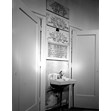
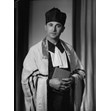
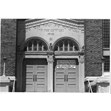
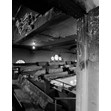
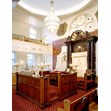
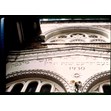
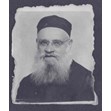
![Minsker Synagogue, interior sanctuary, Toronto, [ca. 1977]. Ontario Jewish Archives, Blankenstein Family Heritage Centre, item 2063|](/media/Digital Assets/2063.jpg?width=111&height=111&404=no-img.jpg)


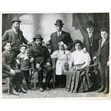
![Ladies' Auxiliary, Beth Jacob Synagogue, Toronto, [ca. 1907]. Ontario Jewish Archives, Blankenstein Family Heritage Centre, item 1311|](/media/Digital Assets/1311.jpg?width=111&height=111&404=no-img.jpg)
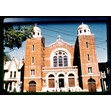
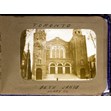



![First Narayever Synagogue, interior, Toronto, [ca. 1977]. Ontario Jewish Archives, Blankenstein Family Heritage Centre, item 2075.|](/media/Digital Assets/2075.jpg?width=111&height=111&404=no-img.jpg)

![Procession at Kiever Synagogue, Toronto, [194-]. Ontario Jewish Archives, Blankenstein Family Heritage Centre, item 535.|The man on the second from the right is Isaac Belfer who was the Gabbai at the Kiever for many years.](/media/Digital Assets/535.jpg?width=111&height=111&404=no-img.jpg)


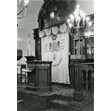
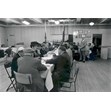
![Rabbi Solomon Langner in Kiever Synagogue, Toronto, [195-?]. Ontario Jewish Archives, Blankenstein Family Heritage Centre, item #533|When the Kiever was completed 1927, Rabbi Solomon Langner became the spiritual leader of the congregation and continued in this capacity until his death in 1973. Rabbi Langner was the son of Rabbi Moishe Langner, the Strettiner Rebbe of Toronto. His three brothers were Abraham, Isaac, and Mordechai, who all became rabbis as well.](/media/Digital Assets/533.jpg?width=111&height=111&404=no-img.jpg)
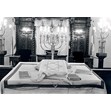
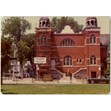
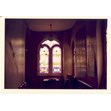
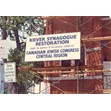
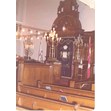
![Sol Edell (left), Chairman of TJC-CJC Archives Committee discusses restoration plans for the Kiever Synagogue with architect Martin Mendelow (right), [1975?]. Ontario Jewish Archives, Blankenstein Family Heritage Centre, item 1794.|](/media/Digital Assets/1794.jpg?width=111&height=111&404=no-img.jpg)
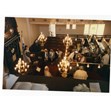
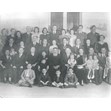
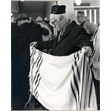
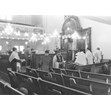
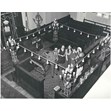
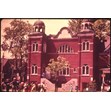

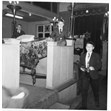
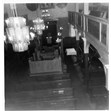
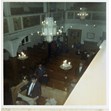
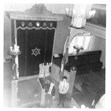
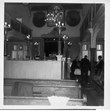
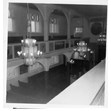
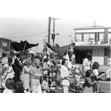
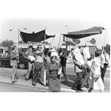
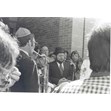
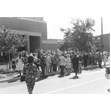

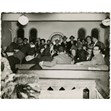

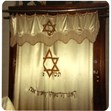
![Kol Yaakov Anshei Emes Synagogue, exterior, Toronto, [ca. 1978]. Ontario Jewish Archives, Blankenstein Family Heritage Centre, item 1976.|](/media/Digital Assets/1976.jpg?width=111&height=111&404=no-img.jpg)
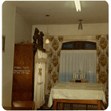

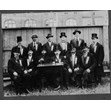
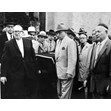
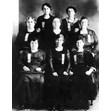
![Family party, anniversary of Faivel and Rochel Zarnitsky, Londoner Shul, Toronto, [1942 or 1943]. Ontario Jewish Archives, Blankenstein Family Heritage Centre, fonds 83, file 9, item 22.|](/media/Digital Assets/3831.jpg?width=111&height=111&404=no-img.jpg)
![Cantor Jacob Dorskind with his choir, Hebrew Men of England Synagogue, Toronto, [ca. 1923]. Ontario Jewish Archives, Blankenstein Family Heritage Centre, item 1904.|](/media/Digital Assets/1904.jpg?width=111&height=111&404=no-img.jpg)
![Cantor Boris Charloff, Toronto, [195-]. Ontario Jewish Archives, Blankenstein Family Heritage Centre, item 3345.|Cantor Boris Charloff had a shul on College St. He was also cantor at Hebrew Men of England Synagogue.](/media/Digital Assets/3345.jpg?width=111&height=111&404=no-img.jpg)
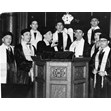
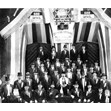
![Car decorated for donation of Sefer Torah to the Hebrew Men of England Congregation, Toronto, [ca. 1918]. Ontario Jewish Archives, Blankenstein Family Heritage Centre, item 993.|](/media/Digital Assets/993.jpg?width=111&height=111&404=no-img.jpg)
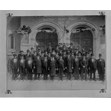

![University Avenue Synagogue, exterior, Toronto, [ca. 1955]. Ontario Jewish Archives, Blankenstein Family Heritage Centre, item 1769.|](/media/Digital Assets/1769.jpg?width=111&height=111&404=no-img.jpg)
![McCaul St. Synagogue, exterior, Toronto, [ca. 1955]. Ontario Jewish Archives, Blankenstein Family Heritage Centre, item 1771.|This building was originally a Methodist church which was renovated and remodeled into a synagogue in 1904.](/media/Digital Assets/1771.jpg?width=111&height=111&404=no-img.jpg)
![McCaul St. Synagogue, interior (view of the ark), Toronto, [ca. 1955]. Ontario Jewish Archives, Blankenstein Family Heritage Centre, item 3183.|](/media/Digital Assets/3183.jpg?width=111&height=111&404=no-img.jpg)
![McCaul St. Synagogue, interior (view of the ark), Toronto, [ca. 1955]. Ontario Jewish Archives, Blankenstein Family Heritage Centre, item 1772.|](/media/Digital Assets/1772.jpg?width=111&height=111&404=no-img.jpg)

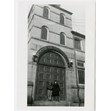

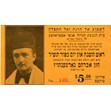
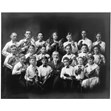
![Former Ostrovtzer Synagogue, exterior, Cecil St., Toronto, [ca. 1978]. Ontario Jewish Archives, Blankenstein Family Heritage Centre, item 2013.|](/media/Digital Assets/2013.jpg?width=111&height=111&404=no-img.jpg)
![Rabbi Dov Yehuda Schochet, [ca. 1955]. Ontario Jewish Archives, Blankenstein Family Heritage Centre, fonds 18, series 1, item 40.
Photo: Mendly Studios|Rabbi Dov Yehuda Schochet was born on 26 July 1904, in Lithuania. At the age of twenty-five, he was appointed Rabbi of the Orthodox Congregation of Basel, a post that he occupied for seventeen years. In 1947, he was elected Chief Rabbi of The Hague and South Holland and held that position for four years. At the same time, he was principal of the Yeshivah in Leiden. In 1951, his family immigrated to Toronto and he became the spiritual leader of the Ostrovtzer Synagogue until 1959, when he became the spiritual leader of Congregation Moriah. Rabbi Schochet died on 22 September 1974, at the age of 70.](/media/Digital Assets/18-Mendly/Series 1/F18_s1_i40.jpg?width=111&height=111&404=no-img.jpg)

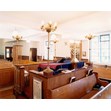

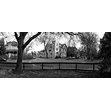
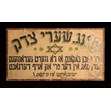
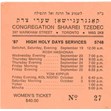

![Hyman's Book Store, 412 Spadina Ave., Toronto, [ca. 1943-1944]. Ontario Jewish Archives, Blankenstein Family Heritage Centre, item 1182.|Mrs. Faye Hyman in front of the store.](/media/Digital Assets/1182.jpg?width=111&height=111&404=no-img.jpg)
![Hyman's Book Store (exterior view from window), 412 Spadina Ave., Toronto, [ca. 1930]-[ca. 1944]. Ontario Jewish Archives, Blankenstein Family Heritage Centre, item 1176|](/media/Digital Assets/1176.jpg?width=111&height=111&404=no-img.jpg)
![Hyman's Book and Art Shop (interior view), 371 Spadina Ave., Toronto, [ca. 1926]. Ontario Jewish Archives, Blankenstein Family Heritage Centre, item 1172.|](/media/Digital Assets/1172.jpg?width=111&height=111&404=no-img.jpg)
![Hyman's Book Store (interior), 412 Spadina Ave., Toronto, [ca. 1930]-[ca. 1944]. Ontario Jewish Archives, Blankenstein Family Heritage Centre, item 1174|](/media/Digital Assets/1174.jpg?width=111&height=111&404=no-img.jpg)

![Portrait of Henry Dworkin, [ca. 1925]. Ontario Jewish Archives, Blankenstein Family Heritage Centre, fonds 10, item 32.|](/media/Digital Assets/10-Dworkin/F10_i032.jpg?width=111&height=111&404=no-img.jpg)
![Roslyn Goldberg, looking east on the south side of Dundas St. W. at Spadina Ave., Toronto, [ca. 1945]. Ontario Jewish Archives, Blankenstein Family Heritage Centre, item 4015.|Dworkin Steamship Agency sign in background.](/media/Digital Assets/4015.jpg?width=111&height=111&404=no-img.jpg)

![Looking south on east side of Spadina Ave. north of Dundas St., Toronto, [1947 or 1948]. Ontario Jewish Archives, Blankenstein Family Heritage Centre, item 4034.|Joseph Barsh, son of Benjamin Barsh--the owner of the Standard Barber Shop appears with his son Preston and his wife Tania in front of the Barber shop. In the background is Goldenerg's Restaurant, Shopsowtiz' Restaurant, and the Victory Theatre.](/media/Digital Assets/4034.jpg?width=111&height=111&404=no-img.jpg)

![Abraham Walerstein in front of ice cream parlour, 332 Spadina Avenue, [1925 or 1926]. Ontario Jewish Archives, Blankenstein Family Heritage Centre, item 2536.|](/media/Digital Assets/2536.jpg?width=111&height=111&404=no-img.jpg)
![Walerstein's Ice Cream Parlour interior, Spadina Ave., Toronto, [1917 or 1918]. Ontario Jewish Archives, Blankenstein Family Heritage Centre, item 1922.|The store opened in 1917. Pictured left to right are: Taube Walerstein, Abraham Walerstein, Benzion Hyman.](/media/Digital Assets/1922.jpg?width=111&height=111&404=no-img.jpg)
![Exterior view of Walerstein's Ice Cream Parlour, 332 Spadina Ave., Toronto, [1922 or 1923]. Ontario Jewish Archives, Blankenstein Family Heritage Centre, item 2534.|Left to right Sarah Walerstein, Taube Walerstein (mother). You can see from the writing on the window that they sold a lot more than just ice cream including tobacco products and Welsh's jam.](/media/Digital Assets/2534.jpg?width=111&height=111&404=no-img.jpg)

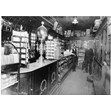

![Murray Koffler preparing pharmaceuticals in the Koffler Drug Store located on Bathurst Street, 1950. Ontario Jewish Archives, Blankenstein Family Heritage Centre, fonds 37, series 4, item 5.|Murray Bernard Koffler was born in a four-room flat over his father's drugstore on College Street on January 22, 1924. His parents' names were Leon and Tiana [née Reinhorn] Koffler. Murray married Marvelle Seligman and they had five children named: Leon, Theo, Tom, Adam and Tiana..Following in his father's footsteps, Murray was educated as a pharmacist and eventually took over the family drugstore when he was twenty-two years old. After making some profitable real-estate investments, he helped to co-found the Four Seasons Hotel chain, and created the first self-serve pharmacy in Canada. His entrepreneurial talents led the way to the creation of the giant pharmacy franchise, Shoppers Drug Mart.](/media/Digital Assets/37-Gilbert/37-S4-Item-5.jpg?width=111&height=111&404=no-img.jpg)
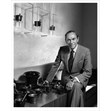
![Murray Koffler with his Aunt Anne outside his father's College Street Store, [ca. 1927]. Ontario Jewish Archives, Blankenstein Family Heritage Centre, fonds 37, series 9, item 1.|Murray Bernard Koffler was born in a four-room flat over his father's drugstore on College Street on January 22, 1924. His parents' names were Leon and Tiana [née Reinhorn] Koffler. Murray married Marvelle Seligman and they had five children named: Leon, Theo, Tom, Adam and Tiana.|Following in his father's footsteps, Murray was educated as a pharmacist and eventually took over the family drugstore when he was twenty-two years old. After making some profitable real-estate investments, he helped to co-found the Four Seasons Hotel chain, and created the first self-serve pharmacy in Canada. His entrepreneurial talents led the way to the creation of the giant pharmacy franchise, Shoppers Drug Mart.|A world renowned philanthropist, Murray Koffler’s donations and commitments have helped fund the creation of the Koffler Centre of the Arts, the Koffler Institute of Pharmacy Management, the Canadian Council for Native Business, the Council on Drug Abuse, and, as well, he has also held positions on numerous boards and organizations. His tireless efforts and achievements have been recognized with many awards including becoming a member of the Order of Canada in 1977.](/media/Digital Assets/37-Gilbert/37-S9-Item-1.jpg?width=111&height=111&404=no-img.jpg)

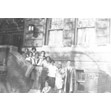
![Y.M.-Y.W.H.A. teen dance at Brunswick Avenue Talmud Torah, [ca. 1950]. Ontario Jewish Archives, Blankenstein Family Heritage Centre, fonds 61, series 6, item 18.|](/media/Digital Assets/61-JCC/F61_s6_i018.jpg?width=111&height=111&404=no-img.jpg)
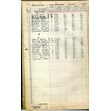
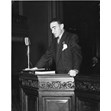
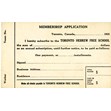
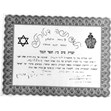
![Drawing of the Brunswick Avenue Talmud Torah by architect Benjamin Brown, [ca. 1922]. Ontario Jewish Archives, Blankenstein Family Heritage Centre, fonds 49, series 1, file 3|Benjamin Brown (1890-1974) was the first practicing Jewish architect in Toronto. After completing his high school equivalency, he enrolled in the University of Toronto architectural program, graduating in 1913. Soon after, Brown opened up a practice with fellow architect Robert McConnell, which lasted until the early 1920s. After the partnership ended, Brown set up an independent practice, which he maintained until his retirement in 1955.|Brown's most important commissions include the Beth Jacob Synagogue located on Henry Street, which was one the largest synagogues in Toronto, and the Balfour Building, an office tower built in the Art Deco style. The designs of Mendel Granatstein’s mansion, which contained a retractable roof for Sukkoth, and a colour sketch of the Primrose Club, which is currently the University of Toronto Faculty Club, may also be of interest to researchers. The fonds also includes some of Brown's files containing articles and illustrations from architecture and design journals of the early twentieth century, which he used as a resource to assist him with his work.](/media/Digital Assets/49-Brown/F49_s1_f3.jpg?width=111&height=111&404=no-img.jpg)



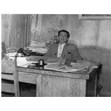

![Storefront of Weingluck's Art Gallery and Gift Shoppe, 665 College Street, Toronto, [ca. 1950]. Ontario Jewish Archives, Blankenstein Family Heritage Centre, item 4461.|](/media/Digital Assets/4461.jpg?width=111&height=111&404=no-img.jpg)
![H. W. Art Gallery, 665 College St., Toronto, [ca. 1948]. Ontario Jewish Archives, Blankenstein Family Heritage Centre, item 4462.|This was the location of Henry Weingluck's first gallery in Toronto. His second store was at 623 College Street, which he opened in the 1950s. He, himself, was a prominent artist, exhibiting in Paris and Berlin before the war.](/media/Digital Assets/4462.jpg?width=111&height=111&404=no-img.jpg)

![N. Hoffman Grocery, 339 Centre Avenue, [ca. 1914]. Ontario Jewish Archives, Blankenstein Family Heritage Centre, item 1556.|This photograph was likely taken on 339 Centre Avenue, before the Hoffman's moved their store to Spadina Avenue in 1915. Pictured are Rivka and Nathan (Nahum) Hoffman.](/media/Digital Assets/1556.jpg?width=111&height=111&404=no-img.jpg)

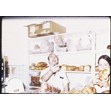
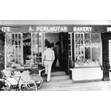

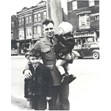
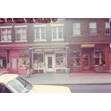







![Bill Gryfe with S. Gryfe and Son's Bakery truck, Toronto, [1933 or 1934]. Ontario Jewish Archives, Blankenstein Family Heritage Centre, item 4520.|](/media/Digital Assets/4520.jpg?width=111&height=111&404=no-img.jpg)
![Arthur Gryfe standing at oven of S. Gryfe and Sons Bakery, 319 Augusta Ave., Toronto, [1931 or 1932]. Ontario Jewish Archives, Blankenstein Family Heritage Centre, item 4519.|Arthur Gryfe was the son of Sam Gryfe. Arthur and his wife Ruth went on to open Gryfe's Bagel Bakery on Bathurst Street in 1957.](/media/Digital Assets/4519.jpg?width=111&height=111&404=no-img.jpg)
![Sam Gryfe with horse-drawn bakery wagon (Hamilton, ON), [ca. 1915]. Ontario Jewish Archives, Blankenstein Family Heritage Centre, item 4517.|This is Sam Gryfe with his horse-drawn bakery wagon, in Hamilton ON.](/media/Digital Assets/4517b.jpg?width=111&height=111&404=no-img.jpg)

![Izzy Shopsowitz and Woody Herman, [197-?]. Ontario Jewish Archives, Blankenstein Family Heritage Centre, fonds 37, series 4, item 44.|Izzy [Isaac] Shopsowitz was co-owner, along with his brother Sam, of Shopsy's Delicatessan. He was a member of Toronto's Beth Tzedec Synagogue. Woody (Woodrow) Charles Herman (1931-1987) was a well-known jazz musician and big band leader.](/media/Digital Assets/37-Gilbert/F37_s4_i044.jpg?width=111&height=111&404=no-img.jpg)

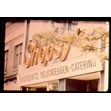
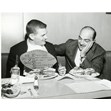
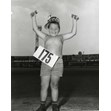
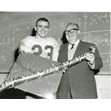

![Milkman Moishe Stern with milk wagon, [ca. 1934]. Ontario Jewish Archives, Blankenstein Family Heritage Centre, fonds 33, series 1, item 22.|](/media/Digital Assets/33-Stern/33-1-22.jpg?width=111&height=111&404=no-img.jpg)

![Joseph Gary's Grocery, 420 College St., Toronto, [ca. 1935]. Ontario Jewish Archives, Blankenstein Family Heritage Centre, item 1543.|](/media/Digital Assets/1543.jpg?width=111&height=111&404=no-img.jpg)

![United Bakers Restaurant, Spadina Ave., Toronto, [between 1925 and 1928]. Ontario Jewish Archives, Blankenstein Family Heritage Centre, fonds 83, file 9, item 35.|Item is a photograph of (left to right) Rose Haniford Green, Sarah Ladovsky, and Mary Haniford Pancer in front of United Bakers Dairy Restaurant. Rose and Mary are sisters and Sarah is their aunt.](/media/Digital Assets/3050.jpg?width=111&height=111&404=no-img.jpg)
![Aaron Ladovsky, Toronto, [ca. 1910]. Ontario Jewish Archives, Blankenstein Family Heritage Centre, fonds 83, file 9, item 9.|Portrait of Aaron Ladovsky in a suit and bowler hat.](/media/Digital Assets/1618.jpg?width=111&height=111&404=no-img.jpg)
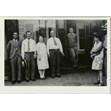
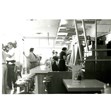
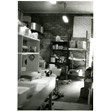
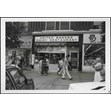
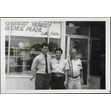
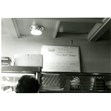

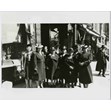
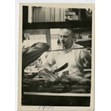
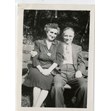

![Ladies of National Council of Jewish Women in gym, 44 St. George St., Toronto, [192-?]. Ontario Jewish Archives, Blankenstein Family Heritage Centre, item 4140.|](/media/Digital Assets/4140.jpg?width=111&height=111&404=no-img.jpg)
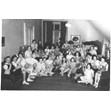
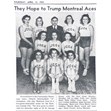
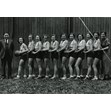
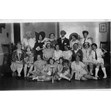

![Club One, Pioneer Women, Toronto, [ca. 1948-1952]. Ontario Jewish Archives, Blankenstein Family Heritage Centre, item 4749.|](/media/Digital Assets/4749.jpg?width=111&height=111&404=no-img.jpg)
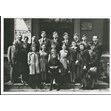


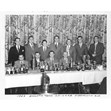
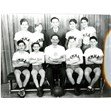
![Y.M.-Y.W.H.A. front desk, Brunswick Avenue, [ca. 1950]. Ontario Jewish Archives, Blankenstein Family Heritage Centre, fonds 61, series 6, item 29.|](/media/Digital Assets/61-JCC/F61_s6_i029.jpg?width=111&height=111&404=no-img.jpg)
![Y.M.-Y.W.H.A. theatre group, [ca. 1950]. Ontario Jewish Archives, Blankenstein Family Heritage Centre, fonds 61, series 6, item 17.|](/media/Digital Assets/61-JCC/F61_s6_i017.jpg?width=111&height=111&404=no-img.jpg)
![Y.M.-Y.W.H.A. exercise room, Brunswick Avenue, [ca. 1950]. Ontario Jewish Archives, Blankenstein Family Heritage Centre, fonds 61, series 6, item 15.|This item is a glass slide of a group of young men lifting weights in the exercise room of the Y.M.-Y.W.H.A. on Brunswick Avenue. The room is visibly overcrowded.](/media/Digital Assets/61-JCC/F61_s6_i015.jpg?width=111&height=111&404=no-img.jpg)
![Y.M.-Y.W.H.A. boys' club, Brunswick Avenue, [ca. 1950]. Ontario Jewish Archives, Blankenstein Family Heritage Centre, fonds 61, series 6, item 25.|This item is a glass slide of a group of members of a Y.M.-Y.W.H.A. boys' club having a discussion while sitting around a table. There is Hebrew writing on the chalkboard behind them.](/media/Digital Assets/61-JCC/F61_s6_i025.jpg?width=111&height=111&404=no-img.jpg)

![Y.M.-Y.W.H.A. building on Major Street, [ca. 1950]. Ontario Jewish Archives, Blankenstein Family Heritage Centre, fonds 61, series 2-2, item 38.|](/media/Digital Assets/61-JCC/F61_s2-2_i38.jpg?width=111&height=111&404=no-img.jpg)
![Y.M.-Y.W.H.A. children at 12 Major Street, [ca. 1950]. Ontario Jewish Archives, Blankenstein Family Heritage Centre, fonds 61, series 6, item 27.|](/media/Digital Assets/61-JCC/F61_s6_i027.jpg?width=111&height=111&404=no-img.jpg)

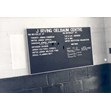
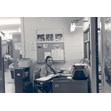
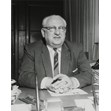

![Residents gardening in yard at the Jewish Old Folks' Home, Cecil Street, [ca. 1950]. Ontario Jewish Archives, Blankenstein Family Heritage Centre, fonds 61, series 6, item 3.|](/media/Digital Assets/61-JCC/F61_s6_i003.jpg?width=111&height=111&404=no-img.jpg)
![Men's ward of Jewish Old Folks' Home, Cecil Street, [ca. 1950]. Ontario Jewish Archives, Blankenstein Family Heritage Centre, fonds 61, series 6, item 2.|](/media/Digital Assets/61-JCC/F61_s6_i002.jpg?width=111&height=111&404=no-img.jpg)
![Nurses' station at Jewish Old Folks' Home, Cecil Street, [ca. 1950]. Ontario Jewish Archives, Blankenstein Family Heritage Centre, fonds 61, series 6, item 5.|](/media/Digital Assets/61-JCC/F61_s6_i005.jpg?width=111&height=111&404=no-img.jpg)
![Poster for Jewish Old Folks Home, Cecil Street, Toronto, [195-]. Ontario Jewish Archives, Blankenstein Family Heritage Centre, item 249.|](/media/Digital Assets/249.jpg?width=111&height=111&404=no-img.jpg)
![Exterior view of Jewish Old Folks' Home, Cecil Street, [ca. 1950]. Ontario Jewish Archives, Blankenstein Family Heritage Centre, fonds 61, series 6, item 1.|](/media/Digital Assets/61-JCC/F61_s6_i001.jpg?width=111&height=111&404=no-img.jpg)
![Jewish Old Folks' Home (Toronto), [192-?]. Ontario Jewish Archives, Blankenstein Family Heritage Centre, fonds 14, series 6, item 5.|This photo depicts the exterior of 29 and 31 Cecil Street. Staff and residents are pictured from a distance standing in front of the home. The signs on the building were added to the image after the photograph was taken. The photograph has been plaque mounted.](/media/Digital Assets/14-Baycrest/Series 6/F14_s6_i5.jpg?width=111&height=111&404=no-img.jpg)
![Hospital at the Jewish Old Folks' Home, Cecil Street (Toronto), [ca. 1933]. Ontario Jewish Archives, Blankenstein Family Heritage Centre, fonds 14, series 6, item 7.|Item is a copy photograph of residents and a nurse inside the hospital ward at the Jewish Old Folks' Home. This image is found on page 22 of the Home's annual calendar for 1933-4.](/media/Digital Assets/14-Baycrest/Series 6/F14_s6_i7.jpg?width=111&height=111&404=no-img.jpg)
![Jewish Old Folks' Home (Toronto) poster, [193-?]. Ontario Jewish Archives, Blankenstein Family Heritage Centre, fonds 14, series 6, item 8.|This is a publicity poster depicting the exterior of 29 and 31 Cecil Street and group photographs of residents. The signs on the Home were added to the photograph after the image was taken.](/media/Digital Assets/14-Baycrest/Series 6/F14_s6_i8.jpg?width=111&height=111&404=no-img.jpg)
![Residents in backyard of Jewish Old Folks' Home, Cecil Street, [ca. 1950]. Ontario Jewish Archives, Blankenstein Family Heritage Centre, fonds 61, series 6, item 6.|](/media/Digital Assets/61-JCC/F61_s6_i006.jpg?width=111&height=111&404=no-img.jpg)
![Residents in corridor of Jewish Old Folks' Home, Cecil Street, [ca. 1950]. Ontario Jewish Archives, Blankenstein Family Heritage Centre, fonds 61, series 6, item 12.|](/media/Digital Assets/61-JCC/F61_s6_i012.jpg?width=111&height=111&404=no-img.jpg)
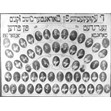

![Primrose Club exterior, [194-]. Ontario Jewish Archives, Blankenstein Family Heritage Centre, fonds 52, series 7, item 1.|](/media/Digital Assets/52-Dora Till/52-7-1.jpg?width=111&height=111&404=no-img.jpg)
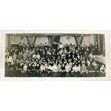

![Broadside: lecture by Emma Goldman at Labor Lyceum, Toronto, [193-?]. Ontario Jewish Archives, Blankenstein Family Heritage Centre, item 3656.|Notice in Yiddish for a lecture by Emma Goldman on "The Youth in Revolt" at the Labor Lyceum, 1937.
Following her expulsion from the United States, Goldman, an influential feminist and anarchist,
came to Toronto and spoke here on several occasions in the 1920s and 1930s. After she died in
Toronto in 1940, her body lay in repose at the Labor Lyceum.](/media/Digital Assets/3656.jpg?width=111&height=111&404=no-img.jpg)
